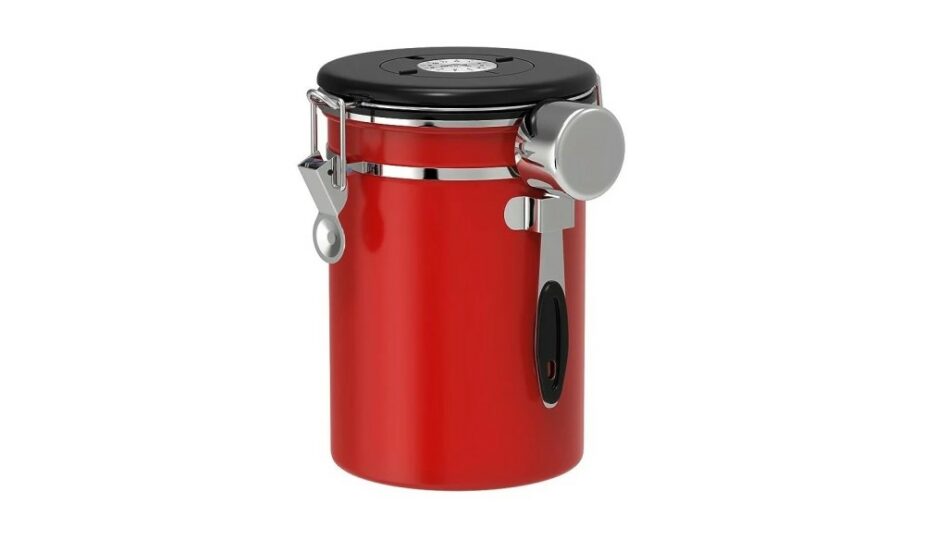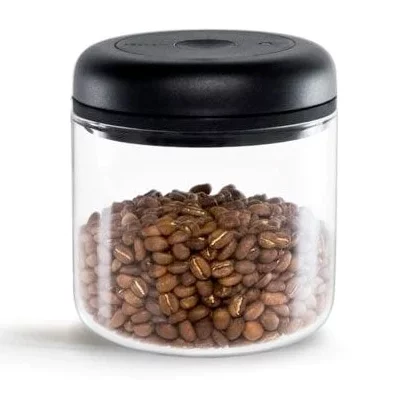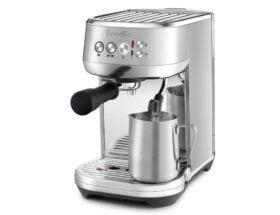
Preserving Coffee Flavor: How to Properly Store Coffee Beans
Preserving the flavor of coffee beans is key to enjoying a delicious and satisfying cup of coffee. The taste, aroma, and quality of coffee significantly depend on the freshness of the beans. When coffee beans are exposed to improper storage conditions, they can quickly lose their flavor, becoming stale and disappointing in the process.
Proper storage of coffee beans is crucial to maintain their freshness and flavor. Many coffee enthusiasts invest in high-quality beans, but fail to store them correctly, resulting in a loss of flavor and aroma. In this blog post, we will provide you with seven effective methods for storing coffee beans at home, debunk common myths about coffee storage, and ensure you have the best cup of coffee every time.
Check out our Best Coffee Storage Containers 2023 comparison here.
Table of Contents
Choose the Right Container
The container you use to store your coffee beans can make a significant difference in preserving their flavor. Opt for an airtight container that is opaque and keeps light out. Clear containers allow light to penetrate and degrade the coffee beans faster, resulting in a loss of flavor. Airtight containers prevent oxygen from coming into contact with the beans, which helps retain their freshness for a longer time.
Did you know that coffee is actually a fruit? Coffee beans are the seeds found inside the berries of the Coffea plant, which grows in tropical regions around the world. So, the next time you enjoy a cup of coffee, remember that you're sipping on a delicious fruit infusion!
Avoid Moisture
Moisture is one of the biggest enemies of coffee beans. It leads to degradation and can cause the beans to go stale quickly. To prevent moisture from affecting your coffee beans, make sure they are stored in a dry and cool place, away from the stove or any humid areas in the kitchen. Avoid storing them in the refrigerator or freezer, as this can cause condensation when the beans are taken out, leading to moisture absorption.
Keep Them at the Right Temperature
Extreme temperatures can have a detrimental impact on the flavor of your coffee beans. Ideally, store them at room temperature, between
Step-by-Step Guide: How to Properly Store Coffee Beans
For the best cup of coffee, begin with top-quality beans and follow these expert storage guidelines to maximize the freshness and flavor of your coffee.
Step 1: Choose the Ideal Airtight Container
Your coffee beans’ primary adversaries are air, moisture, heat, and light. To safeguard the impeccable flavor of your freshly roasted beans, use an opaque, airtight container kept at room temperature. Avoid clear canisters, as they permit light to compromise your coffee’s taste. Opt for dark and cool storage, avoiding cabinets near heat sources like ovens. Consider investing in purpose-built storage canisters with an airtight seal for optimum preservation.
Step 2: Optimal Storage Location
To maintain your coffee’s freshness, it’s vital to store your beans in a dark and cool environment. Direct sunlight exposure can rapidly deteriorate your beans’ flavor. Store them in a dark, cool cabinet, far from heat sources such as ovens or appliances that generate warmth, ensuring the longevity of your beans’ quality.
Step 3: Purchase in Small Batches
Coffee beans start losing freshness shortly after roasting. To ensure the highest quality, consider purchasing smaller batches of freshly roasted coffee, sufficient for one to two weeks. Minimize air exposure by dividing your supply into smaller portions, reserving the larger, unused portion in an airtight container, particularly when dealing with pre-ground coffee. For whole beans, grind just before brewing to limit exposure to oxygen.
Step 4: Freezing Your Coffee Beans
Freshness plays a pivotal role in coffee quality. Experts unanimously recommend consuming coffee as quickly as possible post-roasting, especially after breaking the original packaging seal. There’s debate about the advisability of freezing or refrigerating coffee, but the critical factor is that coffee is hygroscopic, absorbing moisture, odors, and tastes from the surrounding air.
Standard home storage containers may still permit small oxygen infiltration, potentially leading to freezer burn during extended freezing. When refrigerating or freezing coffee beans, use genuinely airtight containers to prevent these issues. If freezing your coffee, only take out what you need for a week at most, returning the rest to the freezer before condensation forms. Importantly, freezing your beans will not alter the fundamental coffee brewing process.
Wrap Up
Proper storage of coffee beans is essential to preserve their freshness and flavor. By following the seven effective methods outlined in this blog post, you can ensure that your coffee beans stay at their best for as long as possible.
Remember to choose the right container, keep them away from light, heat, moisture, and odors, and avoid freezing your coffee beans. By debunking common myths about coffee storage, you can make informed decisions about how to store your beans properly.
We hope you found this guide helpful in understanding the best practices for coffee storage. If you have any questions or additional tips, please leave a comment below. We’d love to hear from you!










